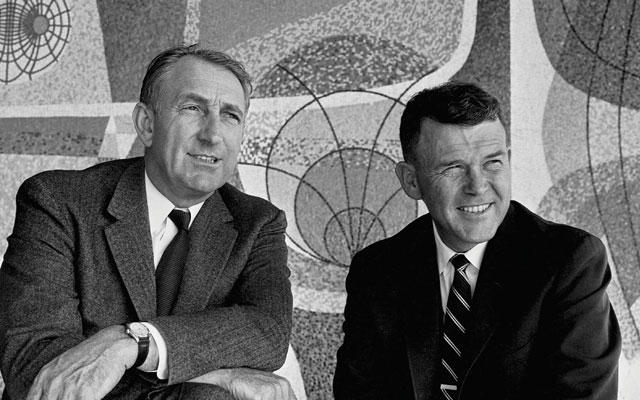A moonshot launched from an outhouse is a pretty apt description of the cratered Hewlett-Packard’s unlikely attempt to reimagine the computer. A semi-secret project called “the Machine” may be the company’s best shot–albeit, a long shot–to recreate itself and our most used tools all at once, increasing memory manifold with the aid of a fundamentally new operating system. From Tom Simonite at MIT Technology Review:
In the midst of this potentially existential crisis, HP Enterprise is working on a risky research project in hopes of driving a remarkable comeback. Nearly three-quarters of the people in HP’s research division are now dedicated to a single project: a powerful new kind of computer known as “the Machine.” It would fundamentally redesign the way computers function, making them simpler and more powerful. If it works, the project could dramatically upgrade everything from servers to smartphones—and save HP itself.
“People are going to be able to solve problems they can’t solve today,” says Martin Fink, HP’s chief technology officer and the instigator of the project. The Machine would give companies the power to tackle data sets many times larger and more complex than those they can handle today, he says, and perform existing analyses perhaps hundreds of times faster. That could lead to leaps forward in all kinds of areas where analyzing information is important, such as genomic medicine, where faster gene-sequencing machines are producing a glut of new data. The Machine will require far less electricity than existing computers, says Fink, making it possible to slash the large energy bills run up by the warehouses of computers behind Internet services. HP’s new model for computing is also intended to apply to smaller gadgets, letting laptops and phones last much longer on a single charge.
It would be surprising for any company to reinvent the basic design of computers, but especially for HP to do it. It cut research jobs as part of downsizing efforts a decade ago and spends much less on research and development than its competitors: $3.4 billion in 2014, 3 percent of revenue. In comparison, IBM spent $5.4 billion—6 percent of revenue—and has a much longer tradition of the kind of basic research in physics and computer science that creating the new type of computer will require. For Fink’s Machine dream to be fully realized, HP’s engineers need to create systems of lasers that fit inside -fingertip-size computer chips, invent a new kind of operating system, and perfect an electronic device for storing data that has never before been used in computers.Pulling it off would be a virtuoso feat of both computer and corporate engineering.•
Tags: Martin Fink, Tom Simonite

